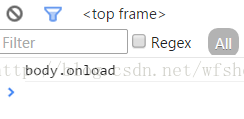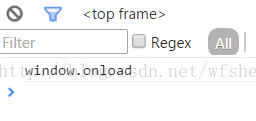onload事件和window,document,body的研究
2020-12-13 13:52
标签:onload addeventlistener w3c html 事件机制 今天在工作中用到了onload事件,发现了一些有趣的事情,比如一般来说,如果我们需要给一个DOM结构绑定一个事件,我们一般会采用如下方法(以Window对象为例): 【现象】 说明,这两个方法都被触发了,在这一点上IE表现也是一致的。 接下来我们来试试document对象 再接下来,我们来试试body对象 可以看到,说明通过这种写法只有onload方式绑定的被触发了。 还有更好玩的,当同时给body和window使用onload方法时,只有window的onload方法触发 具体代码如下: 所以总结如下: 2、当使用在document时,都不触发 3、当使用在body上时,只有onload触发 4、当body和window同时使用onload方法时,body的方法会被吃掉。 【深入研究】 这里的研究主要是参看了w3c草案中的一些说明,怕翻译不好,贴出原文,貌似load事件和其他的有很多不同, 6.1.6.3 Event firing Certain operations and methods are defined as firing events on elements. For example, the Firing a simple event named e means that an event with the name e,
which does not bubble (except where otherwise stated) and is not cancelable (except where otherwise stated), and which uses the Firing a synthetic mouse event named e means that an event with the
name e, which does not bubble (except where otherwise stated) and is not cancelable (except where otherwise stated), and which uses the Firing a The default action of these events is to do nothing except where otherwise stated. When an event is dispatched at a DOM node in a 另外就是,在第6.1.6.2节中有详细描述window,document,body对象对各事件的支持,因为太长,就不贴出来了。 Ps:本文纯属个人研究,如有谬误,烦请指出,万分感谢。 onload事件和window,document,body的研究 标签:onload addeventlistener w3c html 事件机制 原文地址:http://blog.csdn.net/wfsheep/article/details/40536641 window.onload = function() {
console.log('window.onload');
};
window.addEventListener && window.addEventListener("load", function() {
console.log('window.addEvent');
});执行这两个方法,可以看到如下截图:

document.onload = function() {
console.log('document.onload');
};
window.addEventListener && document.addEventListener("load", function() {
console.log('document.addEvent');
});
window.attachEvent && document.attachEvent('onload', function() {
console.log('document.attachEvent');
});执行后发现,document的onload事件无论是哪种方式都不会触发。
document.body.onload = function() {
console.log('body.onload');
};
window.addEventListener && document.body.addEventListener("load", function() {
console.log('body.addEvent');
});
window.attachEvent && document.body.attachEvent('onload', function() {
console.log('body.attachEvent');
});结果如下图:

document.body.onload = function() {
console.log('body.onload');
};
window.onload = function() {
console.log('window.onload');
}执行结果如:

【结论】
1、onload和addEventListener当使用在window上的时候都触发click() method
on the HTMLElement interface is defined as firing
a click event on the
element. [DOMEVENTS]Event interface,
must be dispatched at the given target.MouseEvent interface,
must be dispatched at the given target. The event object must have its screenX, screenY, clientX, clientY,
and button attributes set to 0, its ctrlKey, shiftKey, altKey,
and metaKey attributes set according to the current state of the key input device, if any (false for any keys that are not available), its detailattribute
set to 1, and its relatedTarget attribute set to null. The getModifierState() method on the object must return values
appropriately describing the state of the key input device at the time the event is created.click event means firing
a synthetic mouse event named click, which bubbles and is cancelable.
6.1.6.4 Events and the
Window objectDocument in
a browsing context, if the event is not a load event,
the user agent must also dispatch the event to the Window,
as follows:
Window object
before propagating to any of the nodes, as if the Window object
was the parent of the Document in the dispatch
chain.Window object
at the end of the phase, unless bubbling has been prevented, again as if the Window object
was the parent of the Document in the dispatch
chain
文章标题:onload事件和window,document,body的研究
文章链接:http://soscw.com/essay/33425.html